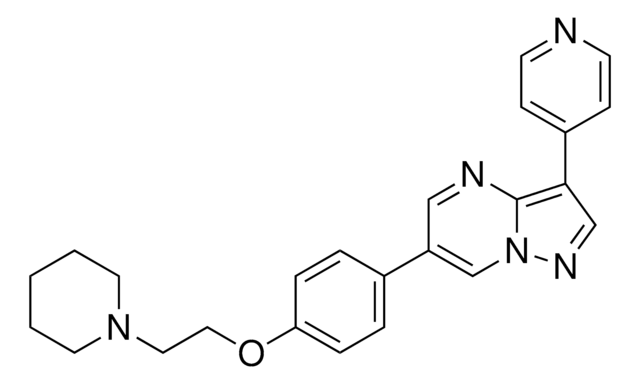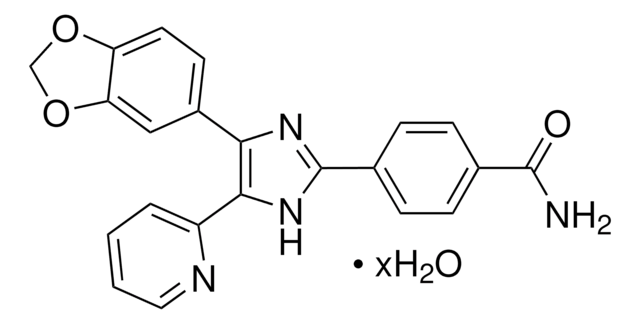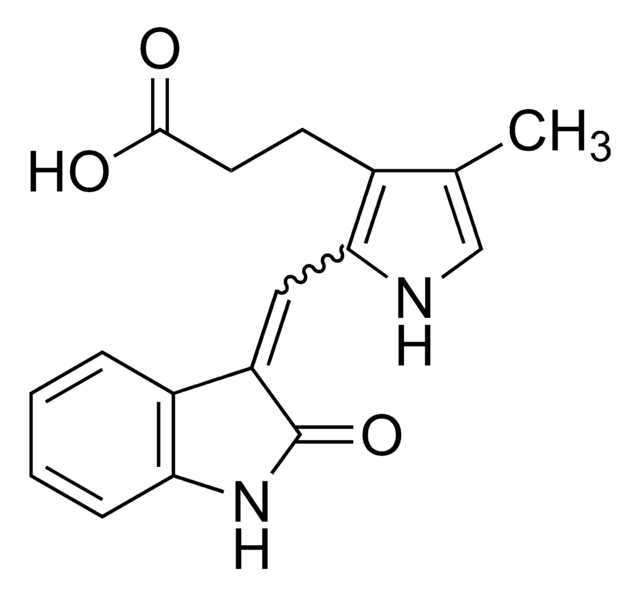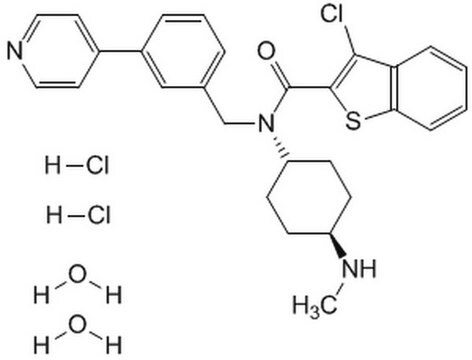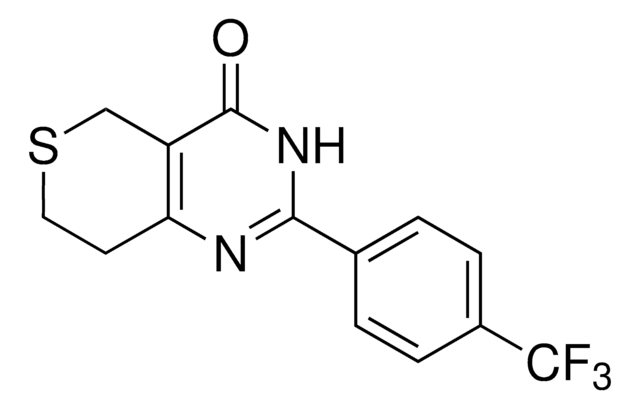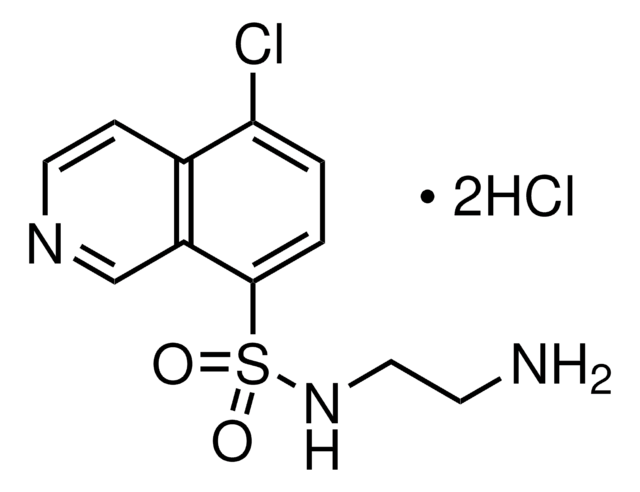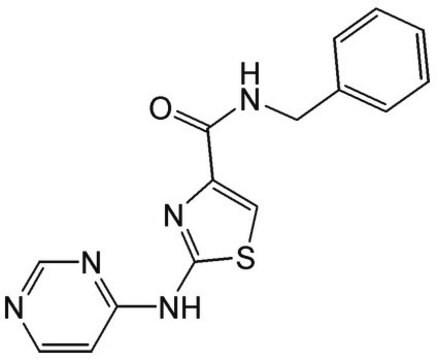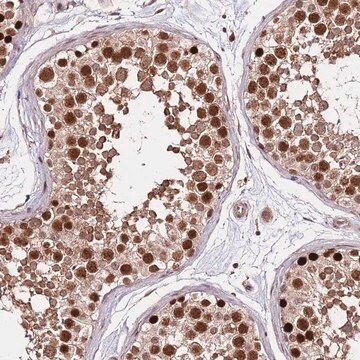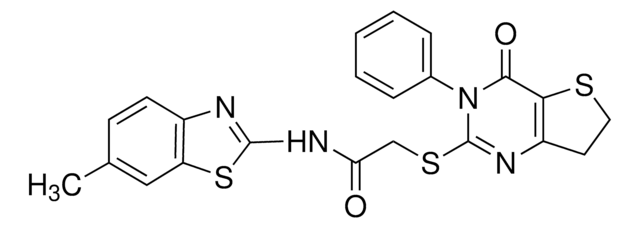S4317
SB 431542 hydrate
≥98% (HPLC), powder, inhibits activation of SMAD proteins
Synonym(s):
4-(5-Benzol[1,3]dioxol-5-yl-4-pyrldin-2-yl-1H-imidazol-2-yl)-benzamide hydrate, 4-[4-(1,3-Benzodioxol-5-yl)-5-(2-pyridinyl)-1H-imidazol-2-yl]-benzamide hydrate, 4-[4-(3,4-Methylenedioxyphenyl)-5-(2-pyridyl)-1H-imidazol-2-yl]-benzamide hydrate
About This Item
Recommended Products
product name
SB 431542 hydrate, ≥98% (HPLC), powder
Assay
≥98% (HPLC)
form
powder
solubility
DMSO: soluble 10 mg/mL
H2O: insoluble
originator
GlaxoSmithKline
storage temp.
−20°C
SMILES string
O.NC(=O)c1ccc(cc1)-c2nc(-c3ccc4OCOc4c3)c([nH]2)-c5ccccn5
InChI
1S/C22H16N4O3.H2O/c23-21(27)13-4-6-14(7-5-13)22-25-19(20(26-22)16-3-1-2-10-24-16)15-8-9-17-18(11-15)29-12-28-17;/h1-11H,12H2,(H2,23,27)(H,25,26);1H2
InChI key
WQUIJVKNPYBZOF-UHFFFAOYSA-N
Application
Biochem/physiol Actions
Features and Benefits
Legal Information
Storage Class Code
11 - Combustible Solids
WGK
WGK 3
Flash Point(F)
Not applicable
Flash Point(C)
Not applicable
Personal Protective Equipment
Certificates of Analysis (COA)
Search for Certificates of Analysis (COA) by entering the products Lot/Batch Number. Lot and Batch Numbers can be found on a product’s label following the words ‘Lot’ or ‘Batch’.
Already Own This Product?
Find documentation for the products that you have recently purchased in the Document Library.
Customers Also Viewed
Protocols
Step-by-step culture protocols for neural stem cell culture including NSC isolation, expansion, differentiation and characterization.
Our team of scientists has experience in all areas of research including Life Science, Material Science, Chemical Synthesis, Chromatography, Analytical and many others.
Contact Technical Service
